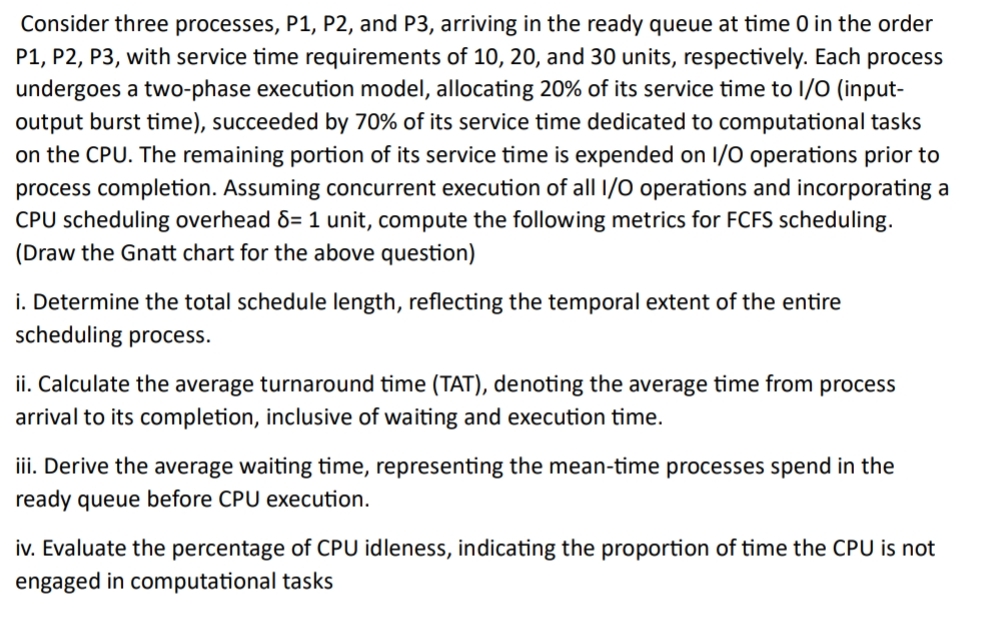Answered step by step
Verified Expert Solution
Question
1 Approved Answer
Consider three processes, P 1 , P 2 , and P 3 , arriving in the ready queue at time 0 in the order P
Consider three processes, and arriving in the ready queue at time in the order P P P with service time requirements of and units, respectively. Each process undergoes a twophase execution model, allocating of its service time to IO inputoutput burst time succeeded by of its service time dedicated to computational tasks on the CPU. The remaining portion of its service time is expended on IO operations prior to process completion. Assuming concurrent execution of all IO operations and incorporating a CPU scheduling overhead unit, compute the following metrics for FCFS scheduling. Draw the Gnatt chart for the above question
i Determine the total schedule length, reflecting the temporal extent of the entire scheduling process.
ii Calculate the average turnaround time TAT denoting the average time from process arrival to its completion, inclusive of waiting and execution time.
iii. Derive the average waiting time, representing the meantime processes spend in the ready queue before CPU execution.
iv Evaluate the percentage of CPU idleness, indicating the proportion of time the CPU is not engaged in computational tasks

Step by Step Solution
There are 3 Steps involved in it
Step: 1

Get Instant Access to Expert-Tailored Solutions
See step-by-step solutions with expert insights and AI powered tools for academic success
Step: 2

Step: 3

Ace Your Homework with AI
Get the answers you need in no time with our AI-driven, step-by-step assistance
Get Started


